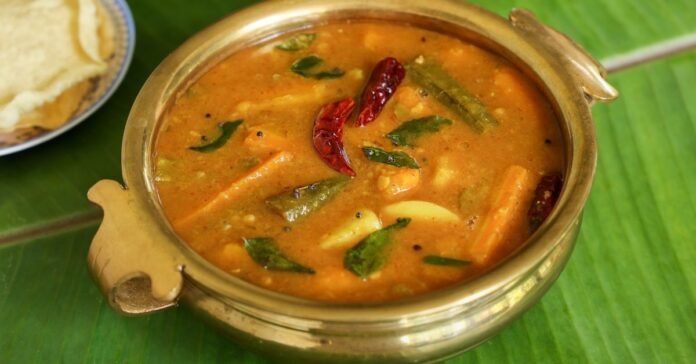
If there’s one dish that’s found on almost every South Indian dining table, it’s sambhar. This hearty, lentil-based stew, packed with vegetables and seasoned with a fragrant blend of spices, is a favorite companion to rice, idlis, dosas, and vadas. But have you ever wondered how this beloved dish got its name? Well, the answer takes us back in time to an unexpected royal connection.
A Delicious Accident in a Royal Kitchen
Legend has it that sambhar owes its name to Chhatrapati Sambhaji Maharaj, the son of the great Maratha ruler Shivaji. During one of his visits to the Thanjavur Maratha kingdom in Tamil Nadu, he was served a unique lentil dish that immediately won him over. The story goes that on that particular day, the palace cooks ran out of kokum—a key ingredient in Maharashtrian cooking used for its tanginess. In a moment of improvisation, they used tamarind instead, a souring agent commonly found in South Indian cuisine. The result? A completely new and delicious version of the traditional Maharashtrian aamti, which became an instant hit in the royal court.
So impressed was Sambhaji that the dish was named in his honor, evolving into what we now know as sambhar. From the royal kitchens of Thanjavur, it spread across South India and became a staple of the region’s cuisine.
A Story Passed Through Generations
Food writer Sonal Ved, in her book Whose Samosa is it Anyway?, echoes this fascinating tale. She writes, “The story goes that one day, the regular stash of kokum did not reach the Tanjore palace’s kitchen on time. Instead of telling Sambhaji that aamti could not be made, the sous chef improvised by adding a dash of tamarind pulp, something the locals had been using for years for its tartness. The dish became such a hit in the court kitchen that it was named sambhar after Sambhaji, and from Tanjore, it spread to other parts of South India.”
More Than Just a Dish
Sambhar isn’t just food—it’s an emotion. Whether it’s the comforting aroma wafting from a home kitchen or the tangy-spicy kick in a restaurant’s version, sambhar holds a special place in the hearts (and stomachs) of millions. It’s a perfect example of how history, innovation, and cultural exchange can shape the way we eat today.
So, the next time you dig into a steaming bowl of sambhar, take a moment to appreciate the royal accident that gave birth to one of South India’s most iconic dishes!

